Pholistoma auritum, Blue Fiestaflower
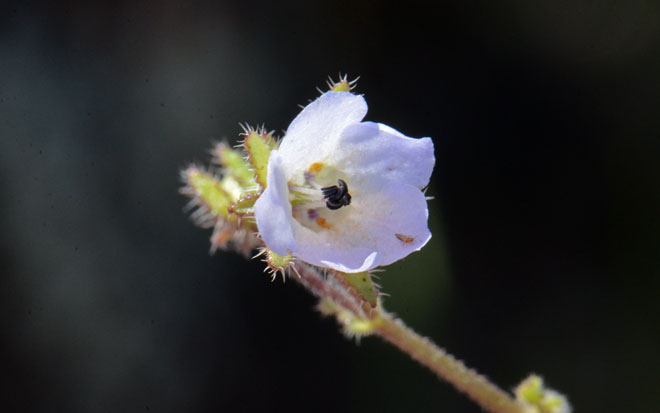
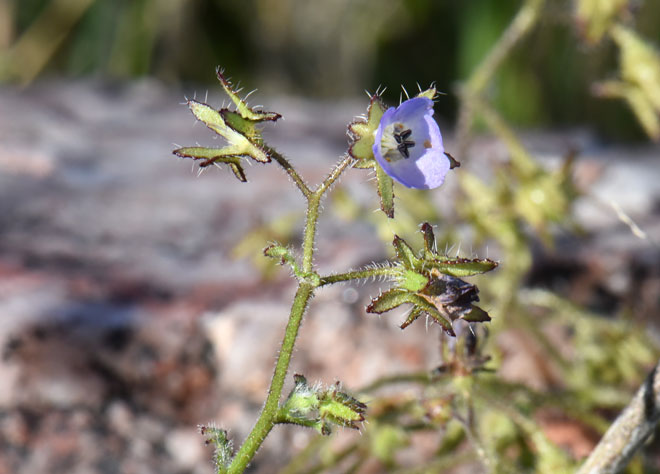
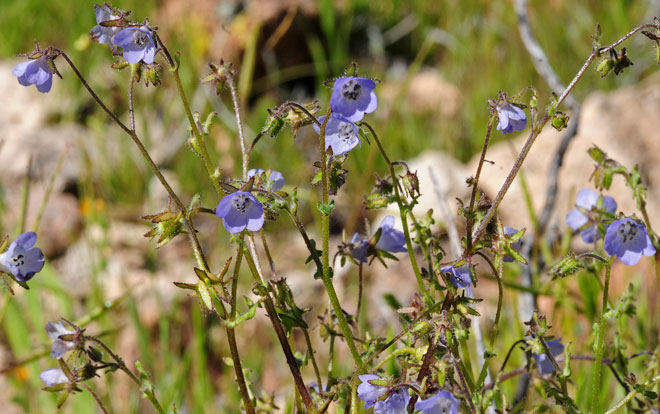
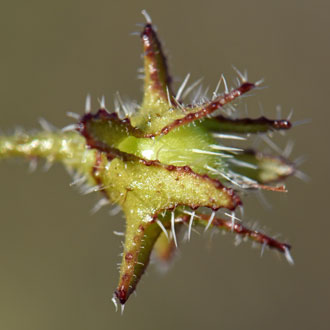
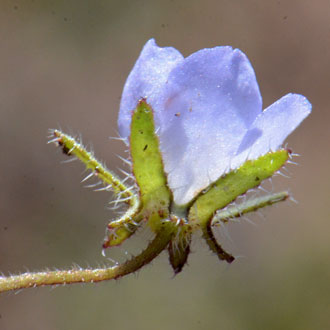
Scientific Name: Pholistoma auritum
Common Name: Blue Fiestaflower
Also Called: Blue Fiesta-flower, Desert Fiestaflower
Family: Hydrophyllaceae (Boraginaceae, Hydrophylloideae), the Waterleaf Family
Synonyms: (Nemophila arizonica)
Status: Native
Duration: Annual.
Size: Up to 1 foot or more.
Growth Form: Forb/herb, vine; trailing or clambering, stems weak, few branches.
Leaves: Green; leaf petioles with clasping bases, leaves deeply cleft, pinnatifid, hispidus (hispid).
Flower Color: Blue, pale blue; deeper blotches in corolla throat, flowers solitary in axillary, terminal, calyx hispidus, fruit a capsule enclosed in the calyx.
Flowering Season: February to April.
Elevation: Below 3,000 feet.
Habitat Preferences: Canyons of the Colorado River, rocky slopes, in California ocean bluffs, talus slopes, woodlands, streambanks and desert-scrub.
Recorded Range: Blue Fiestaflower is found in the far southwestern United States in AZ, CA and extreme southeastern NV. In Arizona it can be found throughout the north- central- and south-central parts of the states. Also native to Baja California and northern Mexico.
North America & US County Distribution Map for Pholistoma auritum.
U.S. Weed Information: No information available.
Invasive/Noxious Weed Information: No information available..
Wetland Indicator: No information available.
Threatened/Endangered Information: No information available.
Genus Information: 3 species in Pholistoma in the United States. 2 species in Arizona.
2 varieties in Pholistoma auritum:
Pholistoma auritum var. arizonicum, Arizona Fiestaflower (AZ, CA, NV);
Pholistoma auritum var. auritum, Blue Fiestaflower (AZ, CA).
In the United States there is 1 species of Pholoistoma. The Plant List includes 9 scientific plant names of species rank for the genus Pholistoma. Of these 3 are accepted species names. All data is approximate and subject to taxonomic changes.
Comments: A common relatively small flowered wildflower in Arizona. This species also has delicate, fragile stems and leaves with light blue flowers and as such, may slightly resemble Distant Phacelia, Phacelia distans. Another superficially similar species is Dainty Desert Hideseed, Eucrypta micrantha.

